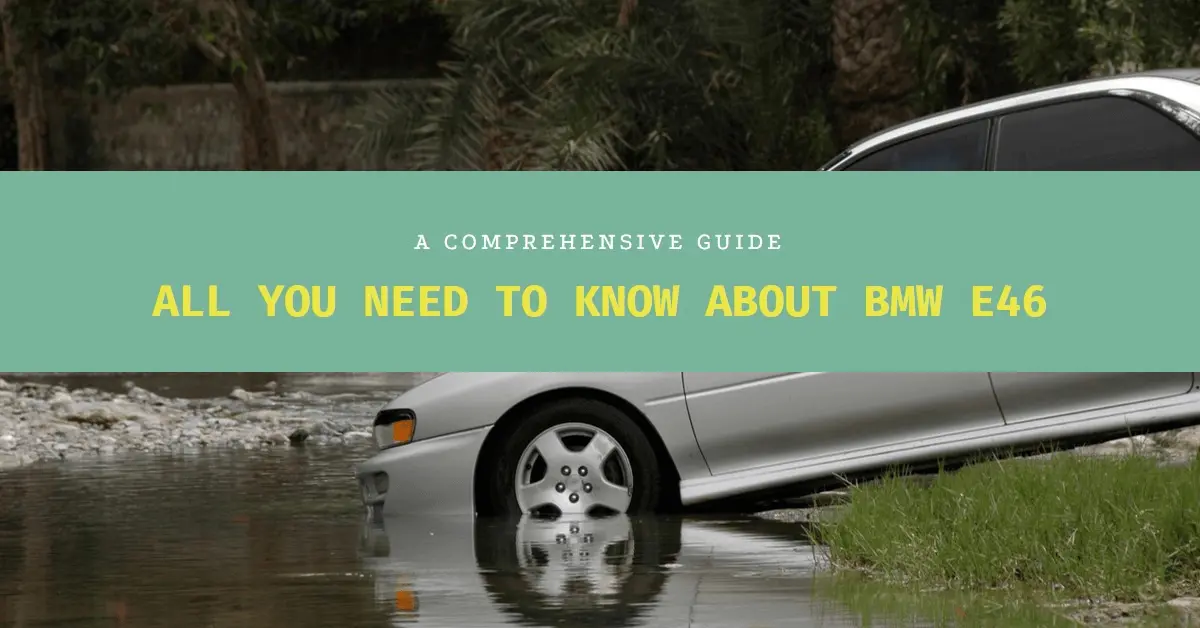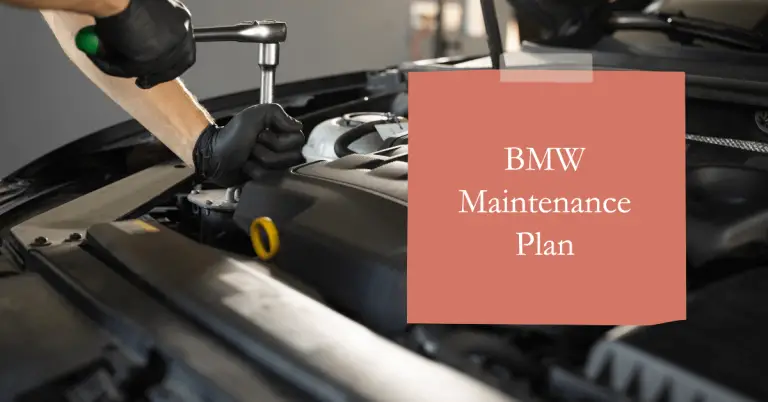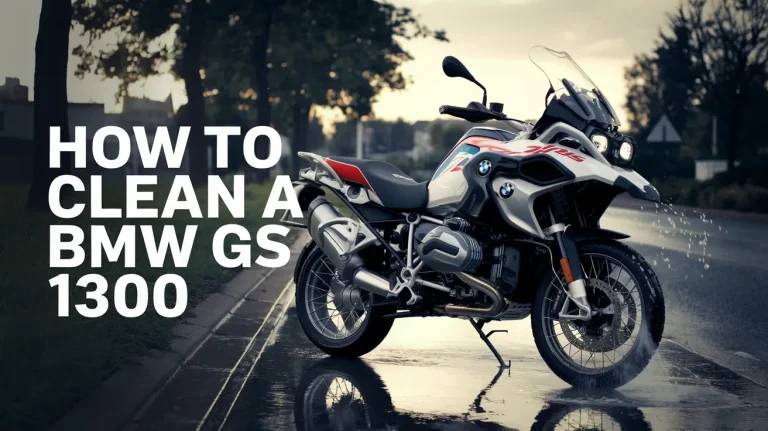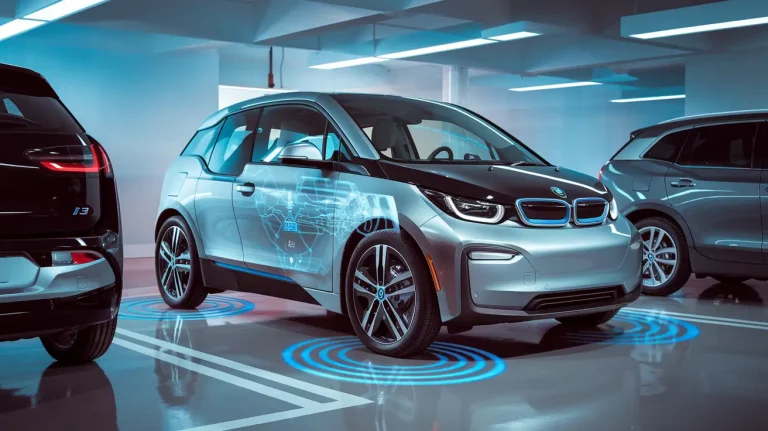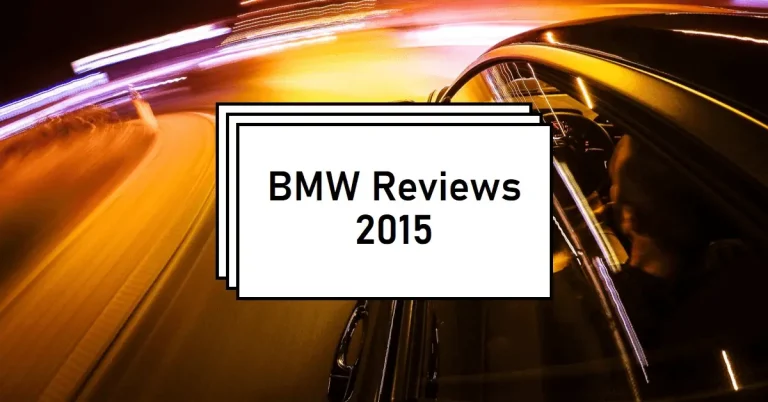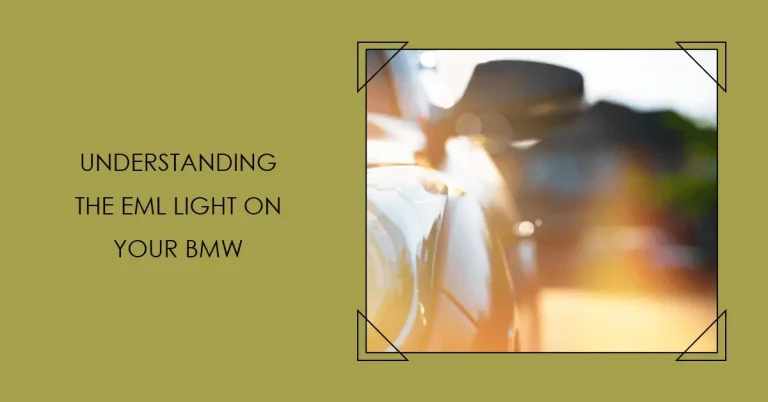What is a BMW E46? A Complete Guide
The BMW E46 is one of the most iconic sports sedans in automotive history. Produced from 1997-2006, this generation of BMW’s legendary 3 Series left an indelible mark on car enthusiasts worldwide. But what exactly is the BMW E46, and why did it become so special? This complete guide will explore the history, models, performance capabilities, and future collectability of the E46.
BMW E46 Overview: Bringing the 3 Series into the 21st Century
The E46 was a clean-sheet design meant to carry BMW’s bread-and-butter 3 Series into the new millennium. It followed the successful E36 generation (produced 1990-2000) and preceded the E90 models sold between 2005-2012.
BMW aimed to strike the perfect balance of luxury, comfort, driving dynamics, and technology with the E46. New innovations included:
- A stiffer chassis and revised suspension geometry for better handling
- Weight savings from aluminum components
- Available steptronic automatic transmission
- Xenon headlights
- Drive-by-wire electronic throttle
- Expanded safety features
First debuting on European models in 1998, the E46 gradually rolled out across sedan, coupe, convertible, touring, and compact body styles over the next several years.
So in BMW parlance, what does “E46” even mean? BMW uses an internal “E-code” to designate each chassis platform. This naming protocol has continued to the present day. For example:
- E30 = 3 Series models produced 1982-1994
- E36 = 3 Series models produced 1990-2000
- E46 = 3 Series models produced 1997-2006
- E90 = 3 Series models produced 2005-2013
Now that we understand the nomenclature, let’s explore why the E46 ascended to such legendary status.
Popular E46 Body Offerings for Every Kind of Driver
One reason the E46 proved so successful was the diversity of body styles available to suit different lifestyles. Buyers could choose their perfect blend of practicality, style, and performance capabilities.
Sedan
The bread-and-butter 4-door sedan constituted the majority of E46 sales. Although not as sleek as the coupe, it offered practicality for carpooling kids to school or hauling items from the home improvement store. Luxury touches like wood interior trim and leather seats brought elegance to the everyday commute.
Coupe
The 2-door coupe provided a sportier, more aggressive look and feel with a sweeping roofline and bulging wheel arches. The coupe captured the free-spirited nature of BMW’s most driving-focused models. It formed the basis for the legendary E46 M3, discussed later.
Convertible
For those craving open-air thrills, BMW also introduced an E46 convertible in 2000. This allowed tooling around with the top down and offered a perfect cruiser for sunny weekend adventures. The chassis retained impressive stiffness despite chopping off the entire roof structure.
Touring
Wagon fans didn’t miss out either. The E46 “Touring” model provided practical cargo room combined with BMW’s renowned handling capabilities. Families and driving enthusiasts alike appreciated the versatility of the Touring wagon.
Compact/Hatchback
Lastly, those wanting maximum utility in a compact package could opt for the E46 Compact, also known as the 3 Series Compact hatchback. Based on the sedan platform but with a truncated rear, the Compact traded some performance for a more efficient footprint. The polarizing exterior styling found fewer takers than the core sedan and coupe options, however.
No matter one’s priorities, BMW had an E46 variant to satisfy their requirements while delivering that signature BMW driving experience.
Powerful and Efficient Engine Choices
A key factor propelling the success of the E46 was the diversity of engines available under the hood. Ranging from sensible 4-cylinder units up to the legendary high-revving 6-cylinder performance motor in the M3, buyers had choices to match their preferences for fuel economy or exhilaration.
On the efficient end, BMW introduced new value-oriented 4-cylinder petrol options along with a new generation of diesel engines:
- 316i – 1.9L I4 making 115 HP
- 318i – 2.0L I4 making 143 HP
- 320d – 2.0L turbo diesel I4 with 150 HP
These smaller motors appealed to European customers in particular who faced high fuel costs.
However, most E46 buyers opted for the silky smooth BMW inline-6 cylinder engines, offered in various states of tune:
- 323i/328i – 2.5L I6 making 170-193 HP
- 325i/330i – 2.5L/3.0L I6 making 184-231 HP
- 330d – 3.0L twin turbo diesel making 231 HP
Enthusiasts coveted the 3.0-liter 225 HP motor found in the 330i for its eagerly revving character and potent torque. But BMW wasn’t done yet…
Legendary E46 M3 Performance
BMW’s famed in-house tuning division, M GmbH, introduced the E46 M3 coupe in 2000. Immediately recognizable by its bulging hood, aggressive front air dams, quad exhaust tips, and signature M division colors, the M3 embodied the pinnacle of E46 performance.
Engineers extensively reworked the standard E46 3 Series coupe to handle the explosive power of the S54 3.2-liter straight-six engine, making an epic 343 HP at an ear-splitting 7900 RPM. With a 8400 RPM redline and virtually no turbo lag, this naturally aspirated powerplant rushed to its lofty redline with the smallest provocation of the accelerator.
The E46 M3 became an instant collectible for driving purists, finding its way onto many “greatest cars of all time” lists. Even now, over 20 years from its debut, clean E46 M3 examples sell for impressive sums due to their timeless appeal.
Clearly BMW knew how to satisfy motoring appetites ranging from practical-minded to thrill-seeking with the versatile E46 model range!
Technical Innovations Setting New Standards
In addition to the styling updates and expanded model range over its predecessor, the E46 introduced several technical enhancements reflecting BMW’s technology leadership:
Refined Suspension Geometry
Engineers carefully refined the front and rear suspension geometry for flatter, more neutral handling compared to earlier generations. Larger diameter sway bars also reduced body roll for better cornering agility. Expanding upon BMW’s reputation for balancing razor sharp responses with a supple ride, the E46 handled responsively while still feeling refined over bumps.
Aluminum Suspension Components
By fabricating control arms and swivel bearings from aluminum instead of steel, BMW shaved precious pounds from the suspension. This attention to weight savings improved handling precision and fuel efficiency across all models.
Steptronic Automatic Transmission
While BMW purists still insisted on the greater driver connection of a manual gearbox, those opting for an automatic could now choose the new Steptronic transmission. This provided the option of shifting manually via the console selector while still avoiding a heavy clutch pedal. Steptronic brought greater driving enjoyment to bumper-to-bumper traffic.
Xenon Headlights
BMW raised the bar for nighttime visibility by introducing self-leveling Xenon high intensity discharge (HID) headlamps. By producing around 2.5x more lumens per watt compared to traditional halogen lights, Xenon lights improved safety and reduced driver fatigue at night.
Electronic Throttle Control
In another advance reflecting the digitization of automobiles, BMW implemented electronic “Drive-by-Wire” throttle control. This replaced the mechanical cable between the accelerator pedal and engine with electronic sensors and actuators for more precise inputs. While polarizing among purists, this technology paved the way for more sophisticated vehicle stability and traction control programming.
While earlier 3 Series generations built BMW’s reputation for luxury sport sedans, the E46 represented a technological leap forward befitting the new millennium.
E46 BMW Buying Guide: What to Look For
Given the E46’s rise to modern classic status among BMW enthusiasts, many are now considering one for their next ride. Let’s explore some key considerations when shopping for an E46!
- Year and mileage – Focus your search on models from 2001-2006 with less than 150k miles for the most hassle-free ownership experience. These later year builds benefitted from refinements and depreciation has already taken its toll.
- Maintenance records – Any car of this age requires proactive maintenance, so ask to see detailed service records before purchase. This helps give you confidence that expenses like cooling system overhauls were already addressed.
- Rust inspection – Crawl under the car checking the floors, rear wheel arches, trunk, and subframes for any cancerous rust. Repairing rust damage gets prohibitively expensive on 20 year old cars. Walk away from any rust buckets!
- Test drive – Obviously exercise the engine through its rev range while testing the gearbox engagement and clutch actuation if equipped. Ensure proper operation of electronics like power windows, lights, radio, and climate controls too.
- Compression and leakdown testing – To protect your investment, insist that a mechanic complete cylinder compression and leakdown testing. This quantifies the engine health rather than relying on the seller’s claims alone.
Ideally find an E46 for sale by the original enthusiastic owner who kept stacks of paperwork confirming regular maintenance. This helps justify paying a premium over clapped-out examples. If equipped with desirable options like the sport package, moonroof, leather, premium sound system, the already high resale value goes even higher.
Why the E46 Became a 3 Series Legend
Now we come to the meat of this article – what elevated the E46 to legendary status in BMW’s illustrious history?
Enormous Global Sales Success
While the earlier E36 generation proved popular in its own right, the E46 smashed sales projections thanks to its irresistible blend of style, performance and luxury. Global production exceeded 1.3 million units over its lifespan, making the E46 the best selling 3 Series ever. Especially in critical US and European markets, car critics and enthusiasts sang the E46’s praises as an ultimate all-around driver’s car.
Racing Pedigree Added Mystique
Beyond mere sales figures, the E46 built its mystique through a rich racing heritage still being lived out today. The sinewy lines of the coupe formed the basis for the iconic E46 M3 GTR racecar campaigned by privateers and BMW’s own Schnitzer racing division. Competing internationally, the E46 M3 GTR carved out sensational back-to-back class wins at the 24 Hours Nurburgring endurance event in 2005 and 2006 against newer machinery.
In North America, the E46 M3 remains legal for racing in several production-based classes including Grand Am. Entire standalone series like Spec E46 focus exclusively on close competition between affordable E46 coupes. The E46 M3’s giant-killing racing feats only bolstered its pedigree among enthusiasts.
Revered as the Last Analog 3 Series
While usually difficult for any car to stand out in BMW’s consistently excellent 3 Series lineup, the E46 captured lightning in a bottle by blending just enough modern technology with traditional BMW values of incredible steering, balance, and driver feedback.
The subtle tweaks to suspension geometry enhanced those inherently sharp BMW reflexes without diluting feedback. BMW nailed the electro-mechanical power steering assist, avoiding the numbness which plagued later EPS systems. The inline 6-cylinder engines eagerly spun to redline while emitting a spine-tingling mechanical soundtrack.
Compared to newer generations insulated by excess sound-deadening materials, electronic nannies, and artificial steering effort, the E46 retains an intimacy between human and machine increasingly rare among modern sedans. In the minds of true enthusiasts, the E46 represented a pinnacle – the final no-compromise Ultimate Driving Machine before concessions to comfort diluted the essence of a 3 Series BMW.
Where Next for the E46 Market?
The used vehicle market seldom moves in predictable ways, but the E46 seems poised for increasing desirability and value escalation going forward. As nostalgia brews for the final analog-feeling BMWs, and earlier E30/E36 models become largely unobtanium at stratospheric prices, attention will turn towards the E46.
We’re already witnessing demand outpacing supply for clean E46 M3 coupes, with prices doubling over the past 5 years into the $30-$50k territory. Even higher mileage examples in reasonable condition now fetch well above $20k as supplies tighten further.
The lower volume specialty models like the 330i ZHP and Imola Red M3 CSL hover around $70,000 reflecting their limited production runs. In comparison, regular E46 coupes, sedans and wagons haven’t enjoyed nearly as extreme appreciation yet.
But for classic BMW fans getting priced out of earlier generations, the E46 325/330 models in manual transmission spec should experience much greater demand and rising values. These 5-speed equipped coupes and sedans in good condition still trade below $10,000 in most cases – easily half the ask of comparable older 3 Series.
As climate change and rising fuel costs make gas-thirsty old BMW 6-cylinder engines less palatable for daily use, the E46 also checks the right boxes for weekend car enjoyment without breaking the bank to run occasionally.
Of course predicting collector vehicle trends years in advance comes with huge uncertainty. But all signs point towards the E46 claiming its place among future BMW classics as newer models lose their luster and earlier 3 Series variants exceed reach. This leaves a prime opportunity for the E46 to fill demand for practical classic BMWs as enthusiasts reluctantly come to terms with vehicle electrification.
Verdict
In the pantheon of revered BMWs, where does the E46 rank? Given its impact on BMW’s success in the early 2000s and enduring popularity with enthusiasts over 20 years later, the E46 clearly emerges among the greatest.
It maintained BMW’s tradition for incredible handling prowess while pushing technological limits to new heights with weight reduction techniques, expanded safety features, and options like xenon adaptive headlights. The diversity of body styles and engine choices meant an ideal E46 existed for any taste, from the practical 320d wagon to the screaming M3 Coupe etched into every auto journalists’ dream garage.
Most importantly, the E46 accessed that intangible quality keeping people obsessively devoted to their BMWs through freezing winters and thick traffic alike. Like a treasured vintage tool, the E46 possesses heaps of personality and engagement lost to newer, arguably better cars – but dispassionately competent appliances seldom stir hearts.
For these reasons as improvements struggle to regain the analog magic of its E46 heyday, BMW will likely never build a more consequential, universally revered 3 Series. The coalescence of cutting edge technology, timeless style inside and out, with an intoxicating driving experience cemented the E46 as an instant classic – quite possibly the definitive BMW for generations to come.

